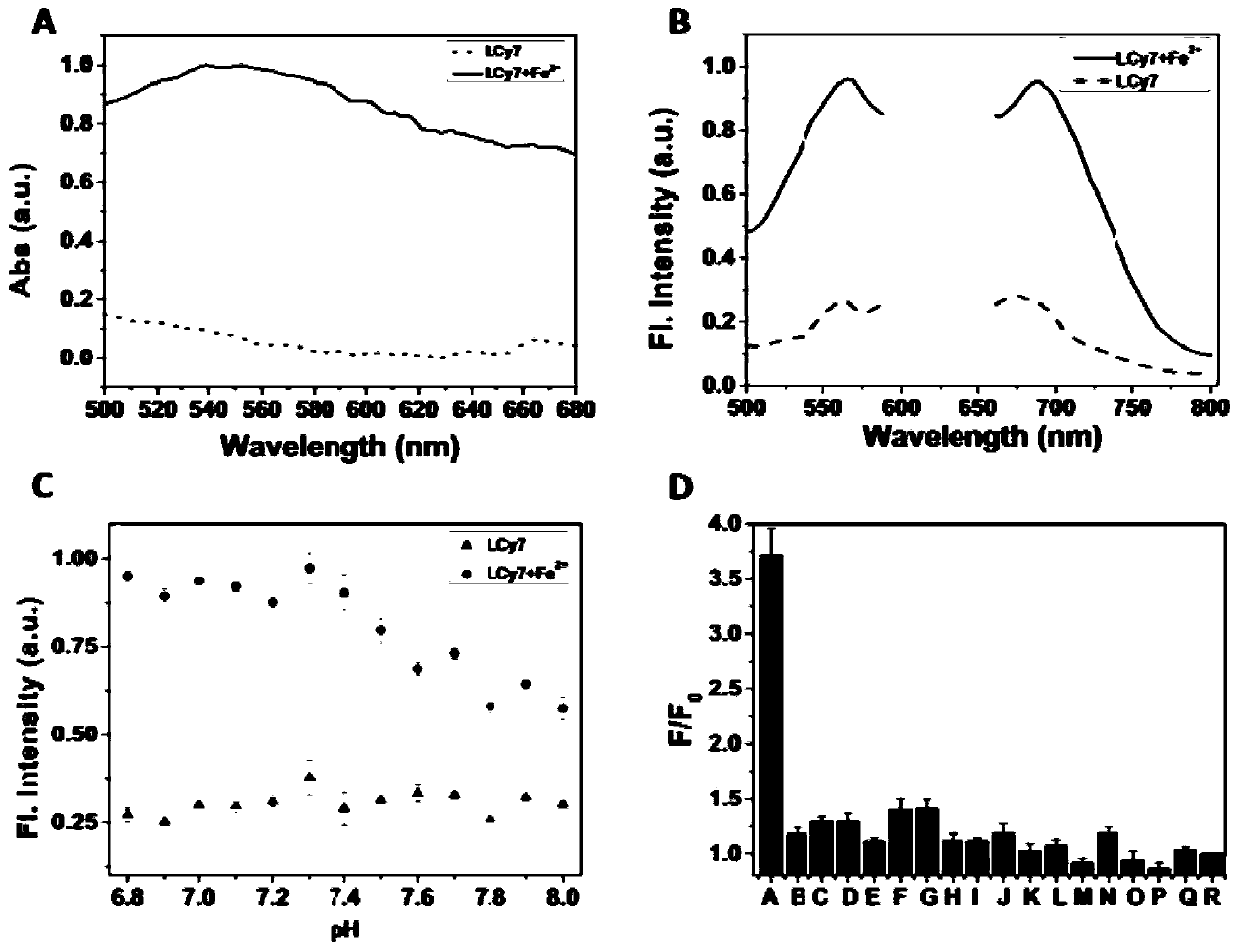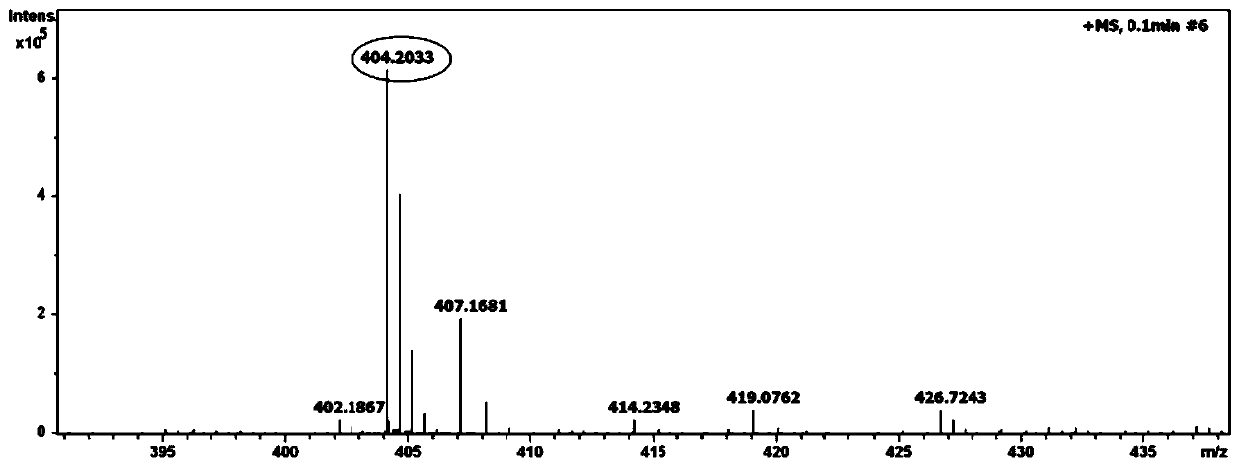Near-infrared fluorescent compound, preparation method and application thereof in detection of ferrous ions
A fluorescent compound, near-infrared technology, applied in chemical instruments and methods, fluorescence/phosphorescence, luminescent materials, etc., can solve the problems that the emission wavelength is less reachable, easily interfered by other metal ions, etc., to avoid interference and simple preparation. , selective effect
- Summary
- Abstract
- Description
- Claims
- Application Information
AI Technical Summary
Problems solved by technology
Method used
Image
Examples
preparation example Construction
[0030] Another embodiment of the present disclosure provides a method for preparing the above-mentioned near-infrared fluorescent compound, which includes the following reaction route to prepare the near-infrared fluorescent compound:
[0031]
[0032] In one or more examples of this embodiment, compound 1 is subjected to a substitution reaction with tert-butyl bromoacetate to obtain compound 2, and compound 2 is subjected to a substitution reaction with 2,6-dibromomethylpyridine to obtain compound 3,4-hydroxy The etherification reaction between isophthalaldehyde and compound 3 obtains compound 4, and the condensation reaction of compound 4 and 2 equivalents of 1,2,3,3-tetramethyl-3H-indole iodide obtains compound 5, and the desorption of compound 5 The near-infrared fluorescent compound was obtained by removing the tert-butyl protecting group.
[0033] In this series of examples, the conditions for the etherification reaction are: adding cesium carbonate and heating to 75-...
Embodiment 1
[0044] Synthesis of fluorescent probes:
[0045] Dissolve di-2-pyridyl ketone (0.744, 3.9 mmol) and hydroxylamine hydrochloride (0.39, 6.06 mmol) in 9 mL of absolute ethanol, stir at room temperature for 90 min, slowly add sodium hydroxide (0.78 g, 19.98 mmol) and heat Reflux at 80°C for 10 min, during which time the solution turns dark orange and a white precipitate forms. The reaction mixture was treated with water (60 mL) and concentrated hydrochloric acid (30 mL), and ethanol was removed by rotary evaporation to give a dark red solution. The product was precipitated by the addition of saturated aqueous sodium carbonate (60 mL) and isolated by vacuum filtration, washed with water, and dried under vacuum at room temperature to give the product bis-2-pyridylketoxime as a white solid.
[0046] The chemical route is as follows:
[0047]
[0048] In 8.5mL ethanol, 5mL water and 7.5mL 23% ammonia water, add bis-2-pyridyl ketoxime (0.5g, 2.5mmol) and ammonium acetate (0.33g, 4....
PUM
 Login to View More
Login to View More Abstract
Description
Claims
Application Information
 Login to View More
Login to View More - R&D Engineer
- R&D Manager
- IP Professional
- Industry Leading Data Capabilities
- Powerful AI technology
- Patent DNA Extraction
Browse by: Latest US Patents, China's latest patents, Technical Efficacy Thesaurus, Application Domain, Technology Topic, Popular Technical Reports.
© 2024 PatSnap. All rights reserved.Legal|Privacy policy|Modern Slavery Act Transparency Statement|Sitemap|About US| Contact US: help@patsnap.com










